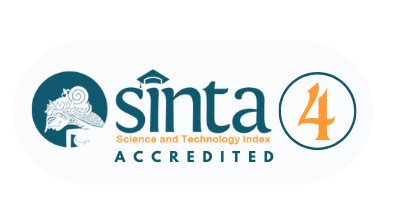Reading Theories and Reading Comprehension; Review and Discussed
DOI:
https://doi.org/10.33633/es.v2i2.3231Keywords:
comprehension; models of reading; schema theoryAbstract
Abstract. In this article, several reading theories need to be reviewed in their relationships to read understanding educators and English lecturers. Three other Reading Models, Bottom-Up, Top-Down, and Interactive, are discussed in the Schema Theory at the theoretical stage. The history of reading training, kinds and purposes of reading, and cognitive reading abilities will be discussed in checking the reading understanding. Finally, it reviews six variables that are engaged in understanding English texts.Keywords: comprehension, models of reading, schema theoryAbstrak. Dalam artikel ini, beberapa teori bacaan perlu ditinjau dalam hubungannya untuk membaca pemahaman para pendidik dan dosen bahasa Inggris. Tiga Model Membaca diantaranyamodel Bottom-Up, Top-Down, dan Interactive dibahas dalam Schema Theory pada tahap teoretis. Rentetan uji coba, jenis dan tujuan membaca, serta kemampuan membaca kognitif dibahas dalam memastikan pemahaman membaca. Akhirnya, terdapat review terhadap enam variabel yang terlibat dalam memahami teks bahasa Inggris.Kata kunci: membaca, model membaca, teori schemaReferences
Anthony, A. (2018). What Is the Interactive Reading Model?. Science Article. Retreived from https://classroom.synonym.com/interactive-reading-model-13048.html
Burns, M.S. & Kidd, J.K. (2010). Learning to Read. M.S. Burns, J.K. Kidd, in International Encyclopedia of Education (Third Edition), 2010. Retrieved from https://www.sciencedirect.com/topics/social-sciences/reading-comprehension
Denies, L., McKenna, M.C. & Miller, J.W.(1989). Project READ:s: EffectiveDesign for Content Area Reading.Journal of Reading, 22(6).Goodman, K.H. (1967). Reading: A Psycholinguistic Guessing Game.Journal of the Reading Specialist, 6,126-35.
Fahriany. (2014). Schema Theory in Reading Class. IJEE. Indonesian Journal of English Education. IJEE (Indonesian Journal of English Education). Vol. 1. No.1.2014. doi: 10.15408/ijee.v1i1.1192.
Ferdosipour, A. & Delavar, A. (2011). The Effects of Structural Variables on Reading Comprehension in Expository Text of Persian. Procedia - Social and Behavioral Sciences. 30, 2011, 1027-1030. doi: 10.1016/j.sbspro.2011.10.200.
Friedman, A. (2019). The Top-Down Reading Model Theory. Updated May 10, 2019. Retrieved from https://www.theclassroom.com/topdown-reading-model-theory-13028.html
Grabe, William. (2012). The nature of reading: Defining reading. August 2012. 4-20. doi: 10.1017/CBO9781139150484.004
Kendeou, P. (2015). Reading Comprehension and PASS Theory. Panayiota Kendeou in Cognition, Intelligence, and Achievement, 2015. Retrieved from https://www.sciencedirect.com/topics/social-sciences/reading-comprehension
Mason, L. et al . (2012). Highlights in Reading Comprehension Intervention Research for Students with Learning Disabilities. From: International Encyclopedia of Education (Third Edition), 2010. Retrieved from https://www.sciencedirect.com/topics/social-sciences/reading-comprehension.
Snow, C.E. (2010). Reading Comprehension: Reading for Learning. C.E. Snow, in International Encyclopedia of Education (Third Edition), 2010 Retrieved from https://www.sciencedirect.com/topics/social-sciences/reading-comprehension






















